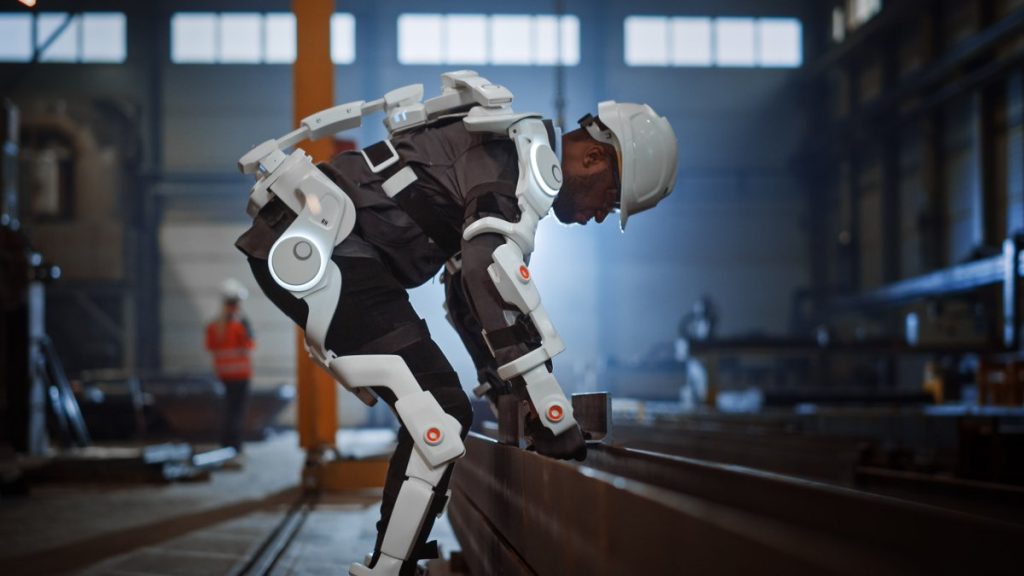TNO has developed a free and easy-to-use online tool that will help you decide if exoskeletons are a good fit for your company.
Work-related Musculoskeletal Disorders (MSDs)
Many workers are still exposed to heavy manual labour, leading to strain and complaints in the back, neck and shoulders. Risk factors include repetitive movements, heavy lifting, overhead work and working in awkward or uncomfortable positions.
However, exposure to these risk factors can often be reduced by adapting the working situation, such as changing the working height, implementing job rotations or using automated solutions. In situations where this is not feasible, an exoskeleton could be an apt solution.
How do exoskeletons work?
Exoskeletons that are currently available and finding their way into larger companies are passive exoskeletons. Passive exoskeletons are equipped with a spring-like mechanism that stores energy when the spring is tensioned, ideally with the help of gravity. In return, the spring provides an assistive torque, which reduces load when it is released. For an arm support exoskeleton, the support is provided when the arms are raised.
The benefit of a passive system is that it is lightweight, doesn’t require batteries, and is less complex than motorized solutions. The downside is that it only provides support in one direction, which could be a hindrance depending on movement velocity and handled objects when moving in the opposite direction. Also, while passive exoskeletons are capable of providing some supportive torque, they have not been developed to handle extreme loads.
It’s important to note that the potential of exoskeletons to reduce physical complaints and MSDs is highly dependent on the acceptance and cooperation of the intended users.
In order to successfully improve existing exoskeletons and increase their adoption – which is the focus of the EXSKALLERATE initiative – we must focus on factors that influence user acceptance: e.g., potential load reduction and hindrances.
The Exoskeleton Potential Assessment tool (ExoPA)
When companies start considering exoskeleton adoption, one particular question often comes up: Will an exoskeleton be helpful for my specific use case?
This is why TNO has developed a tool to help companies answer that very question: the Exoskeleton Potential Assessment tool (ExoPA) which you can access here.
The tool asks questions on main task characteristics, factors that could influence the acceptance of the exoskeleton by the workforce and the working environment the exoskeleton will be used in. Based on the answers, the ExoPA provides the user with an estimated potential.
Using this tool will lead companies one step closer to finding out whether an exoskeleton can be the ideal solution for their heavy tasks
We’d love to hear what you think of this tool! To provide feedback or ask any questions, reach out to exskallerate@baxcompany.com.

